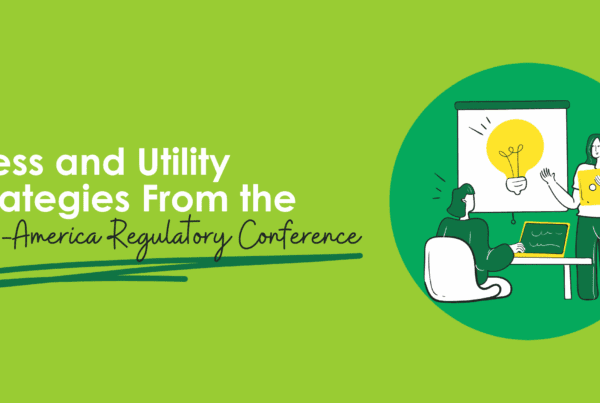
This post contains wild ideas that sprouted during last week’s AESP National Conference in Phoenix. Specifically, it emanates from
- Brad Kates’ (Opinion Dynamics) presentation on evaluation by segmentation
- A comment by Susan Gilbert (Apogee)
- Comments from Elizabeth Titus’ (NEEP) panel, “The Future of Energy Efficiency Evaluation”
Segmentation
Segmentation, according to this simpleton, includes not only splitting customers by business and industry types but also by geographic and demographic factors. Segmentation terms include psychographic and firmographic. I don’t know about you, but my first visualization of psychographic includes stunts featured in the movie Hannibal. For instance, psychotic Mason Verger plotted revenge on Hannibal for his disfigurement. Hannibal would be eaten by mutant giant pigs. That didn’t work out so well for Mason.
In the marketing world, psychographic segmentation includes splitting by personality traits, interests, values, lifestyles, and so on. Firmographics are simply the parallel to demographics for individuals. Firmographics apply to businesses and organizations.
Mr. Kates’ suggestion is to front-end programs with potential studies / evaluations to identify segments that have lagged in program participation and widget uptake. This would find the who and the why so they could be successfully addressed. One example I learned of from an unrelated presentation was that Korean operators of dry cleaners showed remarkable increases in activity once the marketing stuff was presented in Korean. Do ya think?
Funny Thing #1: Potential Studies by Secondary Research
Secondary research is essentially seeing what everyone else is doing and applying it to the population being studied. Secondary research is mentioned as the status-quo approach in Mr. Kates’ paper. In the case of potential studies, why bother with secondary research? Just take secondary sources, and scale it by population. There is no better definition of “garbage in, garbage out”, than this.
Funny Thing #2: Freeridership
If we look at the market ahead of time and see where and why uptake is low, then address the barriers, the freeridership issue is greatly ameliorated. Conversely, when implementers psychographically segment markets today, they pursue anyone who is most likely to implement measures, regardless of why. I call this ambulance chasing. Identify those customers who are going to do stuff and take credit for the sunrise.
Funny Thing #3: Hammer Time
In Trade Allies – Care for a Nail, Sir, I explained that the solution to every problem to the conventional trade ally is new equipment. It doesn’t matter whether new equipment is needed. To implementers, the hammer is cash incentives while opportunities appear as nails. Quite possibly, if decent money and effort were expended for pre-evaluation / potential studies, we would indeed find that hammers are not the best tool. Just as money may contribute to personal happiness, it may contribute to implemented projects. Many, if not most times, it is only a small part of the decision but yet our industry keeps pounding like it’s the only tool in the box.
A Kroger[1] Tale
Susan Gilbert commented that Kroger personalizes relationships with its customers – a far deeper connection than Mason Verger segmentation with faceless customers (pun alert). Kroger tracks purchases to assist with future shopping trips. For example, tier 1 items might be things shoppers buy every trip. Tier 2 items might be every other week, and so on.
To achieve the level of personalization Kroger exploits, utilities would need to vastly loosen their privacy policies. For instance, many websites use cookies, which are small files that tag information to computer browsers to aid future browsing and preferences, as well as stalk users with ads on other sites. In fact, the cookie link above includes a banner ad for the Sheraton Grand in Phoenix, the location of the conference. It’s magic!
Conversations during the conference indicated that utilities don’t allow or use cookies. If customers are browsing a utility site for programs, they won’t get reminders or banner ads when viewing other sites. This is unfortunate. Touchpoint counts are critical.
What if utilities peddled credit cards? Purchasing patterns could be used to profile customers. People like being profiled. It can make them feel special. This was discussed in the opening plenary. It allows service companies to offer what people want when they want or need it. It is impossible to do these things when utility customer information is more guarded than their bank accounts.

Attribution Placebos – Fake Knee Surgeries Work?
In the panel discussing the future of evaluation, Dan Violette from Navigant discussed the importance of attribution studies for any industry, including energy efficiency. He mentioned pharmaceuticals for one example. This reminded me of a recent article I read in The Wall Street Journal. Ironically, my search for the article revealed many studies in recent years that show placebos work for everything from Parkinson’s to spinal surgery.
The connection between the brain and the body is such that if the brain is convinced the body has gained what it needs (drugs, surgery, snap, crackle and pop), it can heal.
The physical is easier to evaluate than the emotional. A decent practitioner of physical ailments can tell if someone is lying about an injury (e.g. worker’s comp) simply by knowing what type of applied force would make a patient howl in pain. Peoples’ psychotic biases, social norms, egos, and fears make it impossible to accurately attribute decision making. I’ll leave you with some laughable placebo study headlines to the left.
[1] Per my recollection, it was Kroger, but not 100% certain.





Join the discussion One Comment